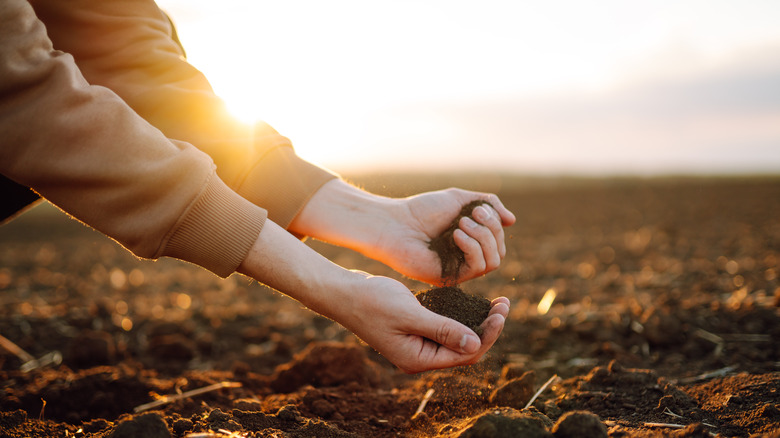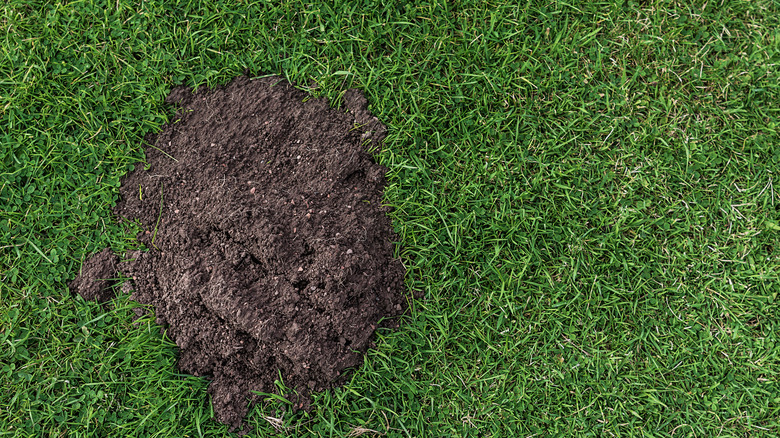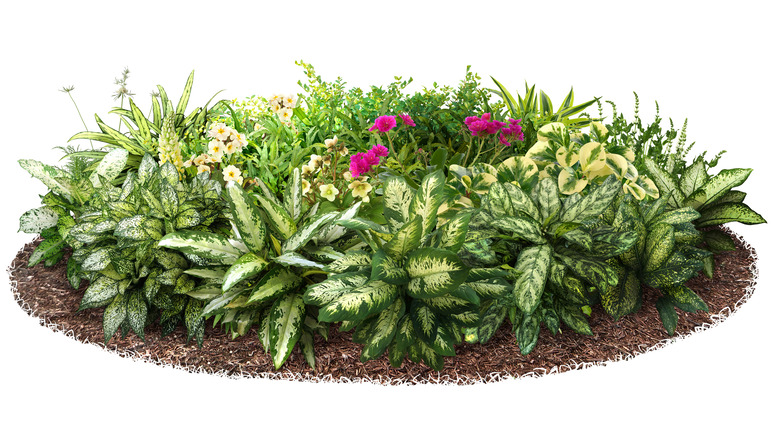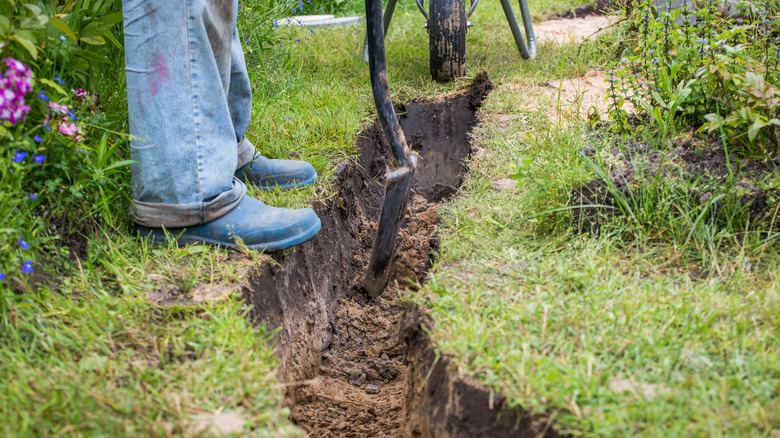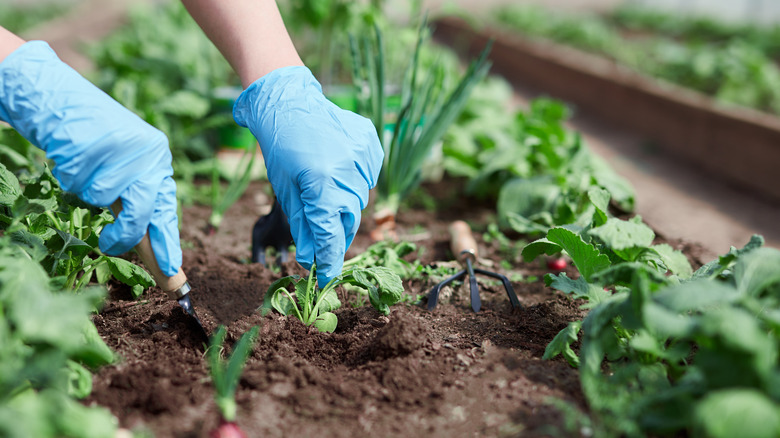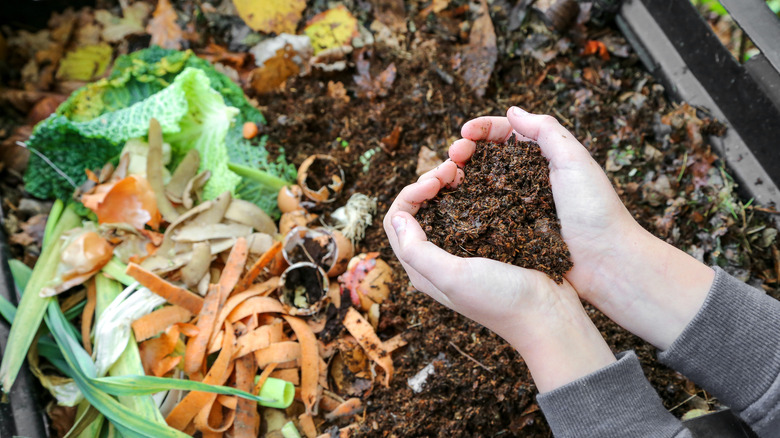5 Simple Tips For Using Topsoil In Your Garden
Do you want to spruce up your garden for healthy growth? If yes, knowing the importance of topsoil and how to use it like a pro gardener will be your next superpower. Topsoil is found 5 to 10 inches on the surface; it is densely concentrated with organic matter, and most of the earth's biological activities occur there. Choosing the right topsoil is very important for the well-being of your plants as it is the foundation of your garden, and once you have a good grip on it, you'll easily grow all the fantastic plants you've always dreamed of. According to the University of Missouri Integrated Pest Management, the grade of a landscape depends heavily on the quality of the topsoil, as does the growth, health, and habit of plants.
Beyond landscaping your new home with good topsoil, you can also use it to improve your lawn and garden. But then, not every topsoil is good –– you've got to consider some factors to choose the right variety. The Royal Horticultural Society suggests you check pH levels, stone content, fibrous roots, and contaminants before finalizing the deal. Also, ask the supplier about the origin and the soil analysis. The best topsoil has an adequate proportion of sand, clay, organic matter, and regular water retaining level and supplies your plants with all the required nutrients they need for proper growth. See our top tips for using topsoil to improve your garden!
1. Patching uneven lawns
A patchy lawn with large dips can be unsightly. It can be unpleasant, especially if you've dedicated much time and energy to achieving even ground levels. Generally, children, pets, and sports activities have a great impact on how our lawns look. As much as homeowners can't get rid of these factors, they can't also compromise having a smooth, even lawn. If what's stopping you from having a well-leveled yard is the cost of hiring a professional gardener, PropertyClub has some cheap DIY tricks that can help. They say you can quickly improve the look of your lawn by applying topsoil in the gaps and then spreading it evenly in a way that will not damage the existing turf. This way, the grasses will continue growing, and all the patches will be invisible eventually. If your lawn is too big and you can't afford to buy topsoil, you can make a lawn patching soil by mixing equal proportions of sand and topsoil, then spread it evenly into the low areas.
When patching uneven lawns with topsoil, ensure you don't add more than 1 ½ inches to a patchy area and leave all growing grasses visible. After grounding, apply a little fertilizer and water your lawn lightly. According to Waynes, some low areas may still exist, especially where young grasses are sprouting; it's best to allow them to grow and then repeat the process after they have matured.
2. Replenishing flower beds
The plants and flowers in your gardens get most of their nutrients and water from the turf in which they live, says PlantSnap. Though the garden soil naturally provides some nutrients for flower beds, it won't be a bad idea to replenish them with that found in good topsoil, especially after a long winter. For your info, topsoil is generally heavier than potting soils, but it still has excellent drainage that allows flowers to extract adequate water and nutrients. But remember to ensure you choose topsoil that fits your garden's soil. Also, check for the one that contains an adequate amount of fertilizer.
When replenishing, start by aerating the flower beds, then mix your topsoil with compost and sharp sand to fit the structure of your garden soil. Apply the mixture over the flower beds you'd like to replenish. Till the areas evenly to combine the old soil with the new mix. Once your flowers have taken to root, add a reasonable amount of mulch to increase moisture retention and slow weed growth.
3. Improving water drainage
Water puddles all over your garden? It might be time to improve your garden's water drainage. Don't fret; there are many ways to enhance a garden's drainage, one of which is adding topsoil. Poor drainage is caused mainly by densely packed soil that doesn't allow water to seep properly. When the water drainage is poor, the soil becomes waterlogged and saturated, affecting plants' growth. This also reduces the amount of oxygen in roots, altering plants' ability to seep water into their roots. A waterlogged environment also exposes plants to pathogens.
For the best results, experts at Bray Topsoil & Gravel suggest mixing sandy topsoil with organic matter, then gently tilling to about 12 inches to loosen the deep soils and allow water to seep in perfectly. You can also cultivate the affected area and add the topsoil, creating a breathing space for the deep roots to retain enough moisture and thrive well. The Water Conservation for Lawns and Landscape advises that when a new layer of topsoil is added, it should be mixed with the undersoil because the former can become soggy if the latter is more coarse.
4. Creating a new garden from scratch
Did you just move into a new home and want some perfect hacks for starting a beautiful flower garden? Add topsoil to your list! Topsoil provides both new and grown plants with the ideal environment they need to sprout. The more you add topsoil to your garden, the richer it becomes. Thanks to its compactness, it also refills the washed-out soil of your potential garden. And if your garden is old and unused for a long time, you can bring it back to life by supplying it with the moisture, bacteria, and nutrients packed in topsoil.
Apply topsoil at least 6 inches deep, then use a shovel to spread it evenly. After that, use an aerator to mix the first layers of the topsoil with the top 3 inches layers of your existing soil. This resembles natural topsoil and improves drainage. As claimed by Gardenista, you can't just add a 3 inches layer of topsoil in your garden, then plant in that area. They warned that farming on such weak layers could lead to drainage problems.
5. To make potting compost
We all know how much value compost adds to soils but do you have an idea of a fantastic way to utilize it together with topsoil to make the perfect potting compost? If you don't know what compost does, the United States Environmental Protection Agency says it enriches the soil and reduces the exposure of plants to diseases and pests while promoting the growth of microorganisms that help break down humus to provide plants with nutrients. Composting also reduces the emissions of methane from the soil.
Though compost contains moisture, microorganisms, and organic matter, there's still the need to provide a soil bed that will make the environment ideal for plant growth. And that's where topsoil comes in. Topsoil is the most preferred type of soil to use due to its water-retaining features and also similarities to compost which allows the two to blend perfectly and work properly. Mixing the two provides your plants with the best of both worlds –– the nutrients in compost and the moisture retention properties of topsoil. Who wouldn't want a lovely garden full of graciously blossoming flowers? Topsoil has a rich dark color due to its high organic matter and nutrients. Therefore, adding a fresh layer can revive your garden's colorful and healthy appearance after a long winter.
